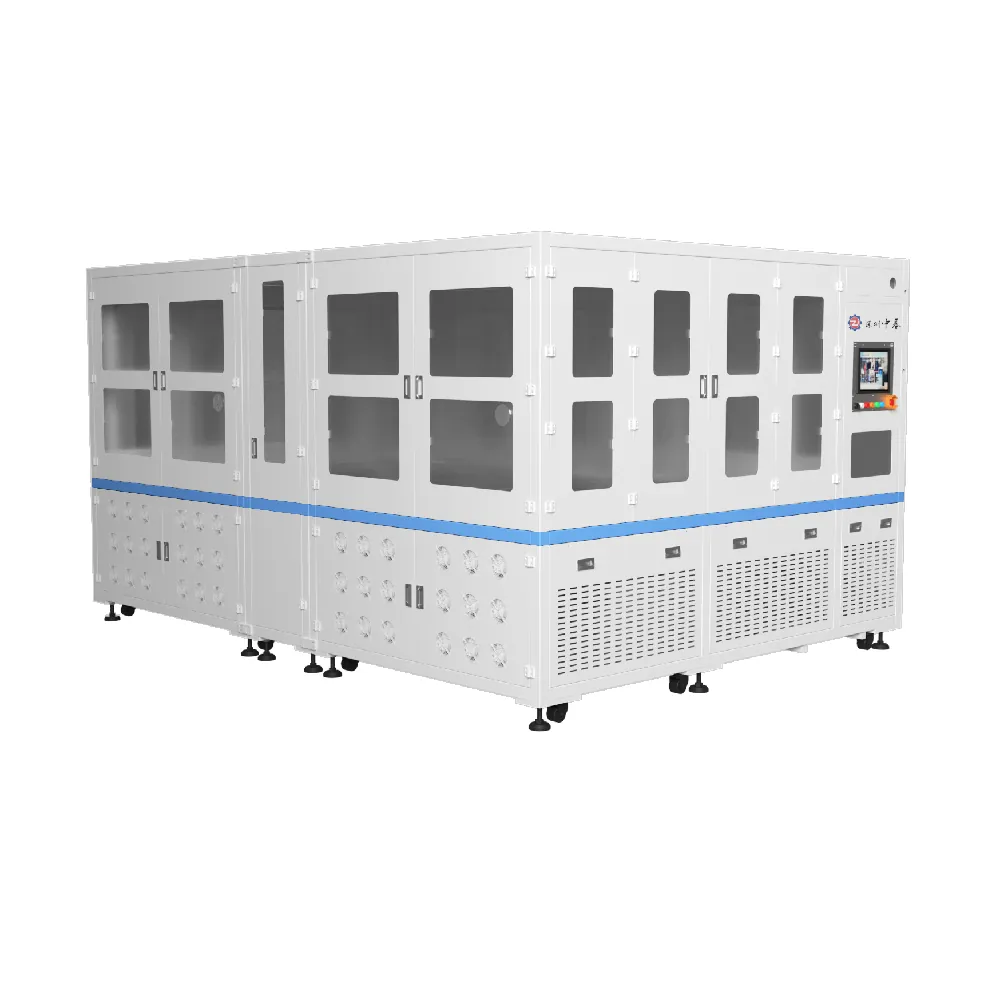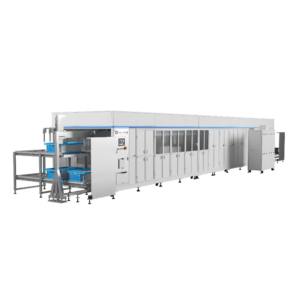The process of battery manufacturing comprises several steps, each being essential for quality and performance. In particular, battery formation is important during the inspection, which is crucial for fault detection, cell capacity, uniformity, and even overall battery performance.

(Copyright photo from: https://www.freepik.com/free-photo/top-view-recycled-batteries_27595704.htm#fromView=image_search_similar&page=2&position=38&uuid=4713abcf-36fe-47d3-a658-5096dd95480a)
What Is Battery Formation?
Battery formation is about conditioning newly manufactured batteries. It includes controlled charging and discharging cycles to stabilize the electrode materials and form a solid electrolyte interphase layer for battery performance.
During this stage, precise voltage and current control helps avoid defects and gives uniform SEI (Solid Electrolyte Interphase) formation. It prevents electrolyte decomposition and boosts cycle life. Furthermore, temperature management avoids thermal runaway. For example, formation may involve initial charging to 80% capacity for lithium-ion batteries. It is followed by rest periods and low-rate cycling to adjust SEI characteristics, which can span many days.
Technologies and Their Significance Behind Battery Formation
1. Electrolyte Filling
In the battery formation process, precise electrolyte filling is key. High-precision dispensing systems guarantee uniform distribution of the electrolyte across all cells. They employ volumetric pumps, gravity-assisted fill techniques, and vacuum-assisted filling to eradicate air pockets, which can impede ionic movement for lower efficiency.
Besides, electrolyte compatibility with electrode materials must prevent unwanted chemical reactions.
For example, in lithium-ion batteries, the electrolyte may comprise a lithium salt (LiPF6) in a mixture of organic solvents. Control over the concentration and purity helps keep optimal ionic conductivity and curtail degradation.
2. Initial Charge and SEI Formation
Forming the solid electrolyte interphase layer is vital, as it inhibits further decomposition of the electrolyte and allows lithium-ion transfer. During the initial charge, charging protocols might include multiple low-rate charging/discharging cycles for a uniform SEI.
And the initial charge may also require temperatures to be regulated within a tight range for controlled SEI growth.
In-situ electrochemical impedance spectroscopy helps monitor SEI formation and adjust charging profiles.

3. Formation Cycling
Formation cycling means multiple charge-discharge cycles to stabilize battery performance. They are completed under controlled conditions for steady electrochemical properties. The process may implicate cycling the battery at many C-rates to simulate different usage conditions. High-throughput cyclers with real-time monitoring systems track each cell’s voltage, current, and temperature. Data helps recognize cells with sub-optimal performance early in the process.
Also, temperature control systems are fundamental during formation cycling to evade thermal runaway in high-energy-density cells. The formation cycling stage is also where capacity matching occurs. It guarantees that cells within a pack have uniform capacity and impedance characteristics.
4. Formation Data Analysis
Analyzing data from formation is critical for quality control and optimization. Software tools process large volumes of data from the formation cycles.
For instance, deviations in voltage profiles during early cycles can show electrolyte decomposition or electrode degradation. Principal component analysis helps lower data dimensionality to render spotting anomalies easier.
Additionally, formation data refine manufacturing processes for better yield and dependability, bring battery smart manufacturing into the ground. Such insights are valuable for iterative improvements in cell design and manufacturing protocols.
5. Safety and Compliance Testing
Safety testing during battery formation guarantees compliance with industry standards. Cells suffer testing for thermal, mechanical, and electrical performance. Overcharge and over-discharge tests simulate exciting conditions to evaluate the cell’s safety mechanisms. Thermal abuse tests expose cells to high temperatures to assess their behavior under thermal stress. Crush and puncture tests help understand cell resilience. Compliance with UL 1642 and IEC 62133 is verified through such tests. The formation process data is cross-referenced with safety test outcomes to correlate manufacturing parameters with safety performance. It helps trigger improvements in both areas.
Conditions to Influence Battery Formation
Above all, the battery formation process includes electrolyte filling, initial charge and SEI formation, multiple formation cycling, data analysis, and testing. Here are more details about the conditions during the process of battery formation:
Indicator | Volume/Range/Common Material | Influence |
Temperature Control | 10-40°C[1] | Decides ion mobility but may cause unwanted side reactions |
Current Density | 2 mA cm^-2[2] | Affects the process of formation of the SEI layer |
Electrolyte Composition | fluoroethylene carbonate, FEC[3] | Influences SEI layer quality and battery performance |
Voltage Profile | 3.8V[4] | Develops a stable SEI layer |
Pressure Application | 1 MPa[5] | Affects electrode contact and SEI layer homogeneity |
Charge/Discharge Cycles | C/10 or C/20[6] | Activate the electrode materials and ensure SEI Stability |
Moisture Control | 2%[7] | React with the electrolyte and active materials for the overall battery performance |
SZJ Automation’s Formation Machine
We at SZJ Automation are among the top battery test equipment manufacturers. Our Battery Formation Machine can precisely manage voltage, current, and temperature during battery formation through repeated charging and discharging cycles. This not only ensures optimal performance but also significantly extends the longevity of the batteries. As a result, during battery manufacturing, our formation equipment can ensure the batteries in electric vehicles or portable electronic devices are powerful enough before delivery.
Conclusion
Battery formation equipment is one of the core solutions at SZJ Automation. After 20 years in the sector, we’ve developed and built precise equipment for our clients. Our intelligent technology makes battery formation fast, accurate, and dependable. Our own R&D team innovates to boost performance and system integration. Especially our newly constructed factory in Xiangyang, Hubei, China. There, we own a 12,463.83 m2 meters testing and inspection workshop to ensure that every piece of battery manufacturing equipment undergoes comprehensive and rigorous quality testing before it leaves the factory. This commitment to quality assures that all products meet the most strict standards of performance and reliability.
If you are interested, please visit our SZJ Automation’s official website to learn more!

References
[1]Available at: https://www.sciencedirect.com/science/article/pii/S0378775324003707#:~:text=The%20influence%20of%20cell%20temperature,gas%20evolution%20rate%20and%20composition.
[2]Available at: https://www.science.org/doi/10.1126/sciadv.adj8889#:~:text=From%20the%20range%20of%20formation,1).
[3]Available at: https://www.mdpi.com/1996-1073/14/22/7467
[4]Available at: https://pubs.rsc.org/en/content/articlehtml/2024/ee/d3ee03559j
[5]Available at: https://link.springer.com/article/10.1007/s00706-023-03162-4#:~:text=The%20optimal%20pressure%20of%201,of%20Li%20dendrites%20%5B25%5D.
[6]Available at: https://www.sciencedirect.com/science/article/pii/S0378775317300113
[7]Available at: https://afry.com/en/insight/clean-room-atmosphere-requirements-battery-production



